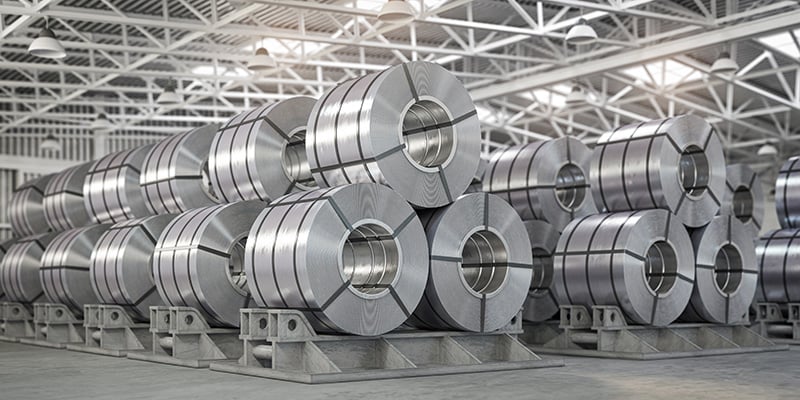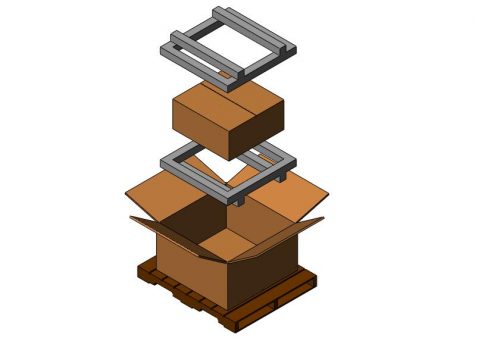High quality in Every Mold: Plastic Container Manufacturer Know-how
High quality in Every Mold: Plastic Container Manufacturer Know-how
Blog Article
Efficient Industrial Recycling Solutions for Lasting Packaging: A Comprehensive Overview
In today's increasingly environmentally-conscious globe, the need for sustainable packaging options has never been higher. To satisfy this demand, organizations throughout sectors are proactively looking for efficient industrial recycling solutions. Nevertheless, browsing the facility landscape of lasting product packaging can be testing without a comprehensive guide. That's where this thorough overview on reliable commercial recycling solutions for lasting packaging is available in. By discovering crucial areas such as product packaging product option, creating for recyclability, implementing recycling infrastructure, working together with reusing partners, and monitoring and measuring reusing success, this overview will outfit you with the understanding and tools necessary to make informed choices and drive favorable adjustment within your organization. Whether you're a product packaging specialist, sustainability supervisor, or merely interested in the subject, this guide will offer beneficial understandings and approaches to aid you navigate the world of sustainable packaging.
Product Packaging Product Choice
The option of packaging products plays an essential duty in guaranteeing the sustainability of industrial reusing options. The option of materials is vital in lessening environmental impact and taking full advantage of recycling efficiency when it comes to sustainable packaging. Picking the right products can assist lower waste generation, conserve resources, and advertise a circular economic climate.
Products like cardboard, paper, glass, and specific types of plastics can be reused several times without losing their high quality. On the other hand, materials that are challenging to recycle, such as mixed plastics or non-recyclable compounds, can create challenges for the reusing procedure and might finish up in burners or landfills.
An additional consideration is using renewable and naturally degradable materials. Product packaging made from renewable energies, such as plant-based plastics or biopolymers, can aid decrease dependency on fossil gas and alleviate climate modification. In addition, eco-friendly products break down normally over time, decreasing the build-up of waste in garbage dumps.
Additionally, the weight and quantity of product packaging products need to be reduced to minimize transport expenses and power usage. Light-weight materials not only need fewer resources during production yet also contribute to reduce carbon emissions throughout transport.
Creating for Recyclability
Packaging developers must focus on the use of products that are extensively accepted for reusing and have developed recycling infrastructures. Products such as glass, aluminum, and specific kinds of plastic, like Animal and HDPE, are typically recycled and should be liked over materials that are expensive or tough to reuse.
One more vital consideration in developing for recyclability is the elimination of unnecessary parts or products. By reducing the variety of layers, coatings, and additional elements, packaging can be made simpler and less complicated to reuse. Additionally, designers ought to aim to decrease using blended materials, as they can complicate the recycling procedure.

Implementing Recycling Framework
Effective implementation of reusing framework is vital for the success of commercial reusing solutions. Without proper infrastructure in area, the recycling process becomes ineffective and ineffective, impeding the total goal of lasting product packaging.
To apply recycling framework efficiently, several crucial factors need to be thought about. To start with, there ought to be a well-organized collection system that helps with the separation and collection of recyclable products. This can include designated reusing containers in public spaces, as well as partnerships with waste administration firms for curbside pickup and sorting.
When collected, the recyclable materials require to be delivered to recycling facilities in a timely way. This calls for effective logistics and transportation networks, making sure that the products get to the appropriate centers without hold-up.
At the recycling centers, progressed sorting and processing technologies need to remain in place to separate various kinds of products properly. This includes using automated arranging devices, optical scanners, and hands-on sorting techniques.
In addition, there should be a durable market need for recycled materials. This can be achieved through cooperations with producers and sectors that make use of recycled products in their production processes. Developing a steady market for recycled materials incentivizes the reusing sector and promotes the circular economic climate.
Teaming Up With Recycling Partners

One secret aspect of working together with reusing partners is the establishment of clear interaction channels. It is very important to establish open lines of communication to promote the exchange of info, updates, and feedback. This allows both events to remain notified concerning the development of recycling initiatives and deal with any type of challenges or issues that may arise.
Additionally, collaboration can include joint efforts in carrying out and developing reusing programs. Recycling companions can provide beneficial insights and advice in Going Here developing efficient collection systems and figuring out the most suitable recycling technologies. By interacting, businesses and recycling companions can maximize the reusing process and lessen waste.
Furthermore, partnership can expand beyond the operational elements of recycling. It can likewise include advocacy and education initiatives. By joining pressures, businesses and reusing partners can raise understanding concerning the importance of reusing and advertise the fostering of sustainable product packaging methods amongst customers and other stakeholders.
Monitoring and Measuring Recycling Success
To make certain the performance of industrial recycling solutions and the accomplishment of lasting product packaging goals, it is vital for organizations and their recycling partners to establish a thorough system for tracking and measuring reusing success (industrial packaging solutions). Tracking and determining reusing success enables organizations to examine the impact of their recycling initiatives, determine locations for renovation, and established meaningful targets for future progress
One means to track reusing success is via using data collection and analysis devices. By gathering information on the amount of packaging waste produced, the portion of waste that is recycled, and the kinds of materials being recycled, organizations can get useful understandings into their recycling performance. This information can after that be examined to determine trends, patterns, and areas of inefficiency.
One more important aspect of tracking and determining reusing success is developing standardized and clear metrics. This allows businesses to compare their efficiency against market criteria and track their development in time. Metrics such as recycling rates, waste diversion prices, and greenhouse gas discharges can supply a quantitative step of a service's recycling success.

Final Thought
In final thought, applying effective commercial recycling remedies for lasting packaging needs mindful consideration of packaging product option, designing for recyclability, applying reusing framework, teaming up with reusing companions, and monitoring and gauging recycling success. By including these methods, services can add to a much more sustainable and environmentally-friendly strategy to product packaging, reducing waste and advertising the round economy.
By discovering key areas such as packaging material selection, designing for recyclability, implementing reusing infrastructure, working together with reusing companions, and monitoring and measuring recycling success, this overview will outfit you with the understanding and tools required to make informed decisions and drive positive adjustment within your organization. Product packaging developers need to prioritize the use of products that are commonly accepted for reusing and have established recycling facilities.Partnership with recycling companions is necessary for useful source the successful application of commercial recycling solutions and the achievement of lasting packaging goals. By signing up with pressures, businesses and recycling companions can raise understanding regarding the significance of recycling and this article promote the fostering of lasting packaging methods among customers and various other stakeholders.
By collecting information on the amount of packaging waste produced, the percentage of waste that is reused, and the types of materials being recycled, organizations can obtain important understandings right into their reusing efficiency.
Report this page